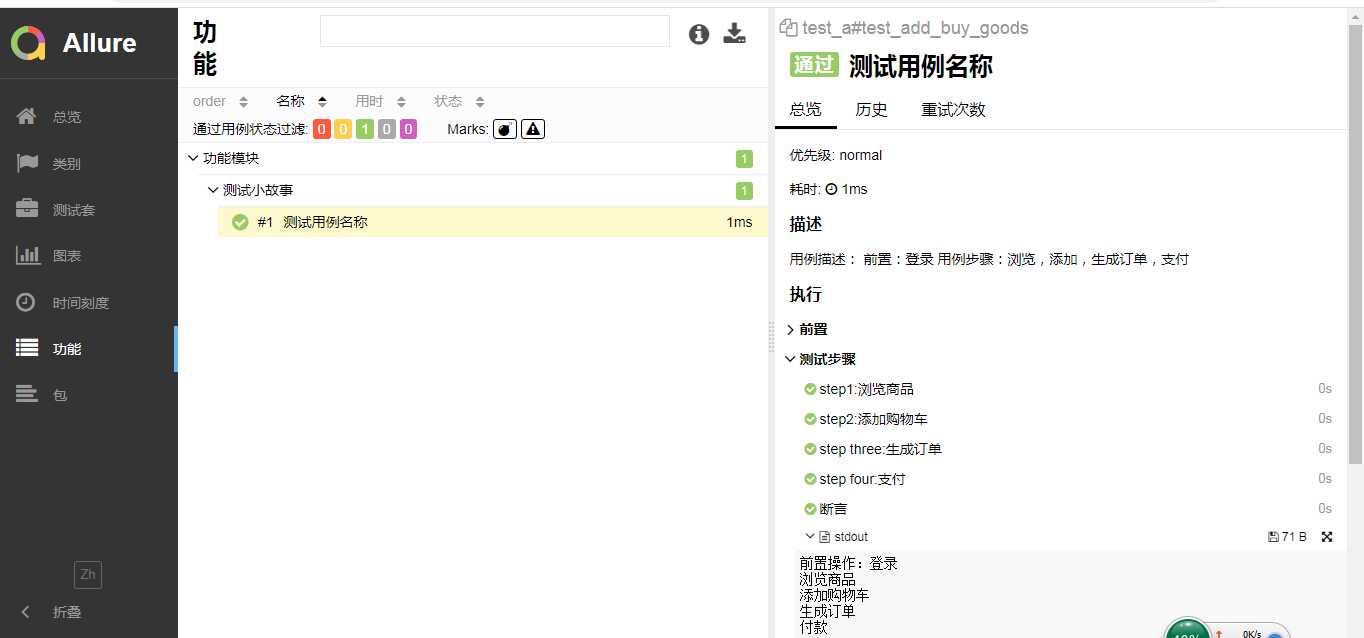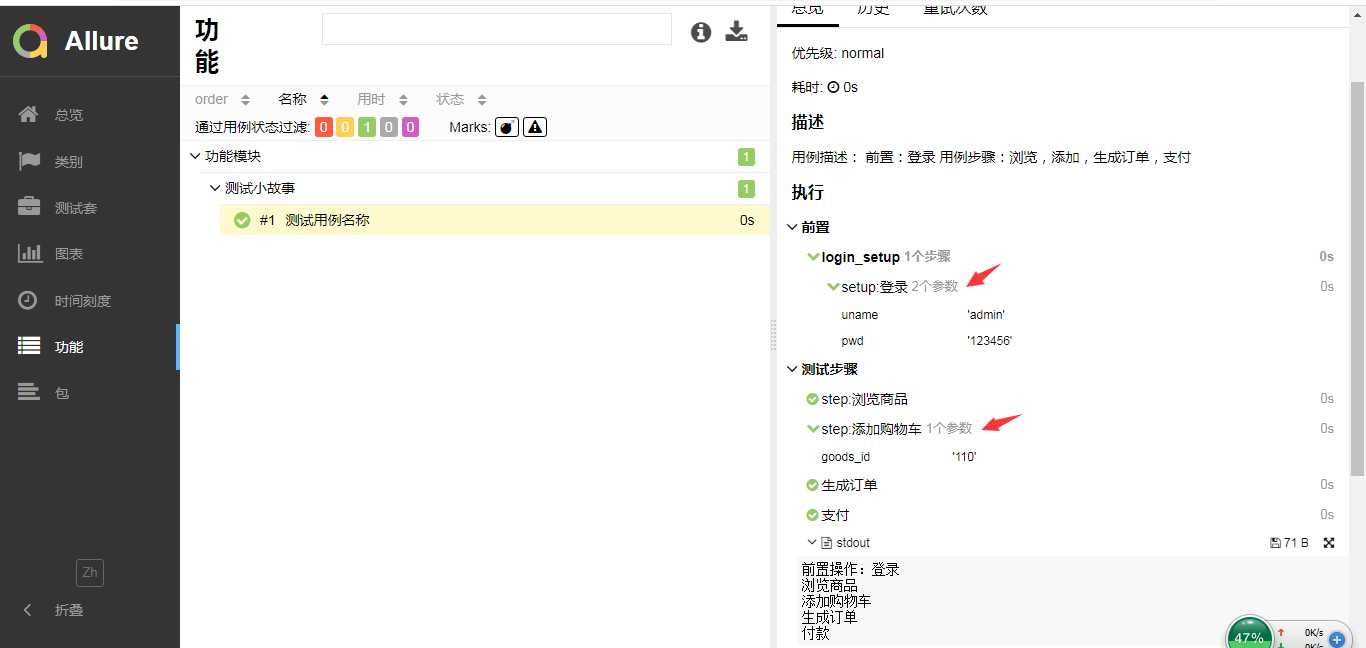前言
一般流程性的测试用例,写成自动化用例时,步骤较多写起来会比较长。在测试用例里面添加详细的步骤有助于更好的阅读,也方便报错后快速的定位到问题。
举个常见的测试场景用例:从登陆开始,到浏览商品添加购物车,最后下单支付。
用例步骤:1.登陆,2.浏览商品,3.添加购物车,4.生成订单,5.支付成功
用例设计
先把上面的每个环节,写成函数放到c_function.py
#c_function.py
import pytest
def login(uname,pwd):
‘‘‘登录‘‘‘
print("前置操作:登录")
def browse_goods():
‘‘‘浏览商品‘‘‘
print("浏览商品")
def add_goods(goods_id="110"):
‘‘‘添加购物车‘‘‘
print("添加购物车")
def buy_goods():
print("生成订单")
def pay_goods():
print("付款")
接下来测试用例设计,登陆可以单独拿出来,当成前置操作,后面的步骤合起来就是一个用例test_a.py
#test_a.py
import allure
import pytest
from .c_function import *
@pytest.fixture(scope="session")
def login_setup():
login("admin","123456")
@allure.feature("功能模块")
@allure.story("测试小故事")
@allure.title("测试用例名称")
def test_add_buy_goods(login_setup):
‘‘‘用例描述:
前置:登录
用例步骤:浏览,添加,生成订单,支付
‘‘‘
with allure.step("step1:浏览商品"):
browse_goods()
with allure.step("step2:添加购物车"):
add_goods()
with allure.step("step three:生成订单"):
buy_goods()
with allure.step("step four:支付"):
pay_goods()
with allure.step("断言"):
assert 1==1
执行用例
pytest --alluredir ./report/x
生成allure报告
allure serve ./report/x
报告展示效果如下

测试步骤@allure.step()
测试步骤也可以在c_function.py里面定义的函数上加上装饰器实现:@allure.step()
#c_function.py
import pytest
import allure
@allure.step("setup:登录")
def login(uname,pwd):
‘‘‘登录‘‘‘
print("前置操作:登录")
@allure.step("step:浏览商品")
def browse_goods():
‘‘‘浏览商品‘‘‘
print("浏览商品")
@allure.step("step:添加购物车")
def add_goods(goods_id="110"):
‘‘‘添加购物车‘‘‘
print("添加购物车")
@allure.step("生成订单")
def buy_goods():
print("生成订单")
@allure.step("支付")
def pay_goods():
print("付款")
测试用例设计test_a.py
#test_a.py
import allure
import pytest
from .c_function import *
@pytest.fixture(scope="session")
def login_setup():
login("admin","123456")
@allure.feature("功能模块")
@allure.story("测试小故事")
@allure.title("测试用例名称")
def test_add_buy_goods(login_setup):
‘‘‘用例描述:
前置:登录
用例步骤:浏览,添加,生成订单,支付
‘‘‘
#with allure.step("step1:浏览商品"):
browse_goods()
#with allure.step("step2:添加购物车"):
add_goods()
#with allure.step("step three:生成订单"):
buy_goods()
#with allure.step("step four:支付"):
pay_goods()
#with allure.step("断言"):
assert 1==1
执行用例
pytest --alluredir ./report/x
生成allure报告
allure serve ./report/x
报告展示效果如下

两种方式对比
使用with allure.step("step:步骤")这种方式代码可读性更好一点,但报告中不会带上函数里面的传参和对应的值。
使用@ allure.step("step:步骤")这种方式会带上函数的传参和对应的值。
这两种方式结合起来使用,才能更好的展示测试报告!
pytest(三十三)--allure.step()添加测试用例步骤
原文:https://www.cnblogs.com/canglongdao/p/13415764.html